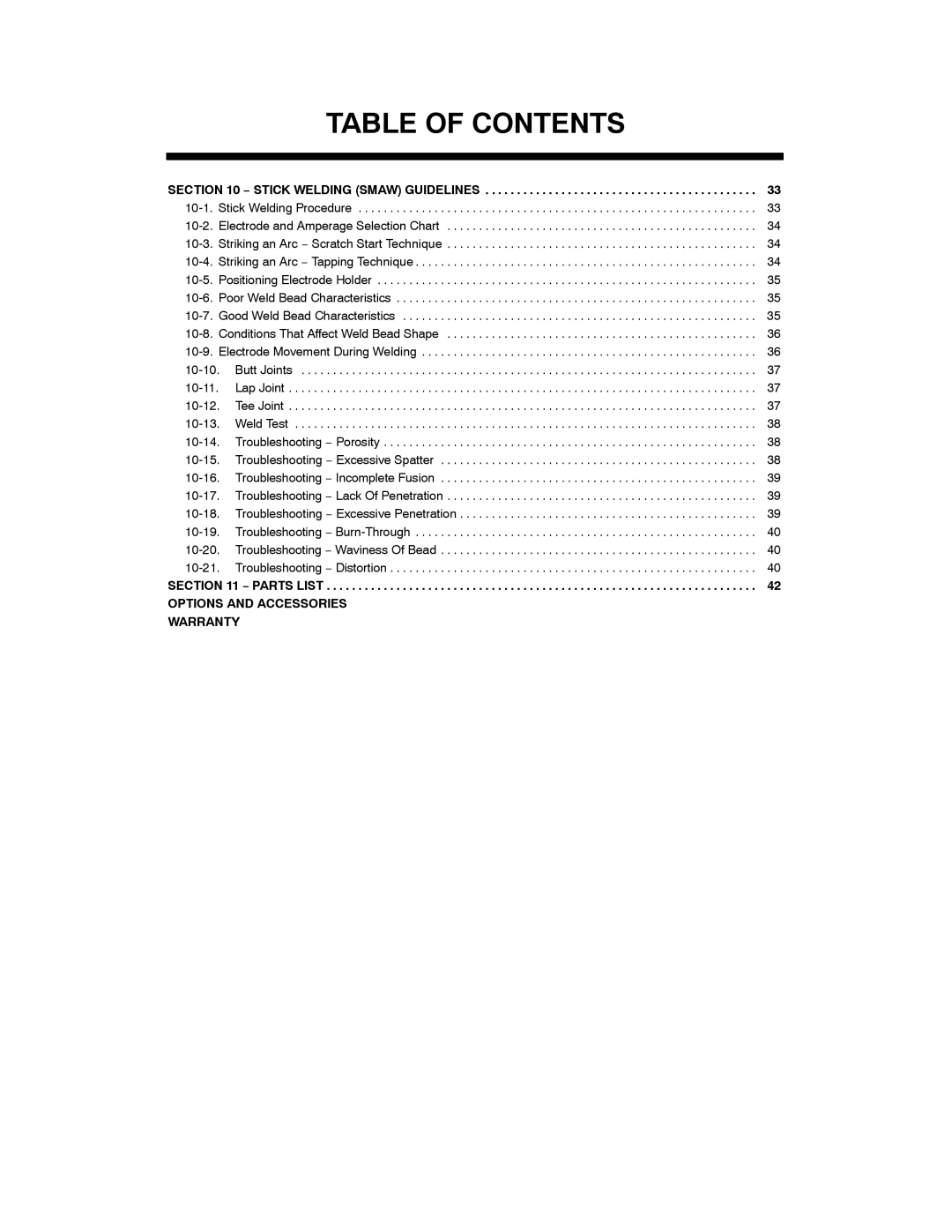Maxstar 200 STR specifications
The Miller Electric Maxstar 200 STR is a versatile and compact welding power source designed for a range of applications, making it an ideal choice for both professional welders and hobbyists. Known for its reliability and exceptional performance, the Maxstar 200 STR is capable of delivering high-quality results in various welding processes, including Stick (SMAW) and TIG (GTAW) welding.One of the standout features of the Maxstar 200 STR is its inverter technology, which allows for efficient energy use and a lightweight, portable design. Weighing in at just 51 pounds, it is easy to transport, making it perfect for fieldwork or remote projects. The unit operates on both 120V and 240V input power, providing versatility for different environments and applications. This adaptability ensures that welders can work effectively in various settings, whether in a shop or on a construction site.
Another significant characteristic of the Maxstar 200 STR is its precise arc control. The machine offers adjustable AC frequency, allowing users to fine-tune the arc characteristics for different materials and thicknesses. This level of control is particularly beneficial when working with aluminum, as it helps reduce heat input and minimize warping. The Maxstar also features a pulsing function, which can enhance the weld pool control and improve penetration, making it easier to achieve clean and consistent welds.
The Maxstar 200 STR boasts a robust duty cycle of 60% at 200A, ensuring that it can handle demanding jobs without overheating. Additionally, the unit is equipped with an advanced cooling system, which helps maintain optimal performance during extended use. Safety features, including overload protection and an enclosed design that reduces the risk of contamination, further enhance the machine's reliability.
Moreover, the Maxstar 200 STR supports a range of accessories, including a remote foot control, which allows for added flexibility during TIG welding operations. This feature is particularly useful for precise control over the welding current, enabling welders to make adjustments on the fly without having to stop and manually change settings.
In summary, the Miller Electric Maxstar 200 STR stands out in the welding industry for its combination of portability, advanced technology, and high performance. With its inverter design, precise arc control, and robust duty cycle, it is an ideal solution for professionals seeking efficiency and quality in their welding projects, whether they are working on industrial applications or artistic endeavors.
